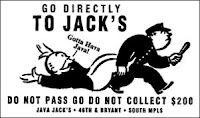
How does your team make impromptu decisions?
To keep Bill Clinton's presidential campaign sailing along on a singular tack, political strategist James Carville posted the declaration,
The economy, stupidin their Little Rock campaign headquarters.
In Made to Stick, Chip and Dan Heath remind us that James Carville's declaration is known in military circles as the Commander's Intent.
Historically, military planners have observed that complex battle plans begin to break down as soon as the battle commences.
Everyone has a plan 'till they get punched in the mouth.
~Mike Tyson
During combat, innumerable variables dictate the prudent course of action. In the 1980s, military planners adopted the concept of Commander's Intent. The Commander's Intent is a direct, fast, and simple declaration like win hearts and minds or destroy the bridge. When faced with a decision in the field, everyone can weigh whether a course of action follows the CI.
The US Department of Defense defines Commander's Intent as
A concise expression of the purpose of the operation and the desired end state that serves as the initial impetus for the planning process. It may also include the commander's assessment of . . . where and how much risk is acceptable during the operation.
Is there value in declaring a Commander's Intent during project chartering? In many cases, I think so. The Product Owner might make the declaration
Provide fast search results
(making sure the team understands the distinction between fast search results and relevant search results).
During iteration planning, and during retrospectives held over the course of the project, team members are then able to repeatedly ask the self-correcting question
Are we providing fast search results?
In some cases, project iterations would benefit from a CI; particularly in iterations where the user stories roll up into a singular theme or goal. In such cases, the Product Owner, or the team collectively, might craft a succinct, high-level statement like,
Display targeted ads with search results
that sharpens the focus of the iteration. During the course of the iteration, the team is then able to ask the self-correcting question
How is this helping us Display targeted ads with search results?



















 ɪ
ɪ